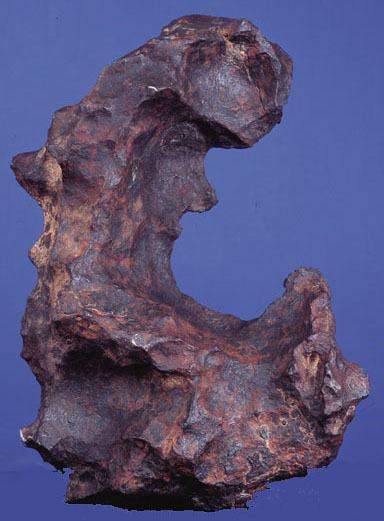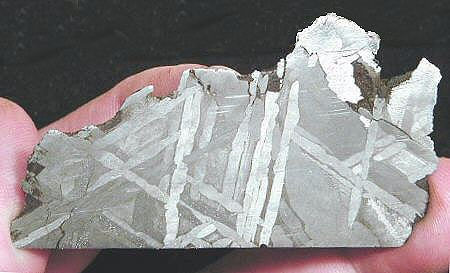
|
When some iron meteorites are cut and acid-etched, the smooth surface shows a distinctive pattern known as Widmanstattan (say the word like a German would). This pattern reflects the formation of Fe and Ni-rich mineral crystals that form in very slowly cooled bodies of molten Fe-Ni metal. Metallurgists see this pattern in man-made metals, but because these metals are cooled so much faster, the Widmanstattan patterns metallurgists see are MUCH smaller. Relationship between achondrites and iron meteorites: If you take an ordinary chondrite and melt it, much of its iron and nickel spontaneously come together to form a central metallic blob. This creates a central core of metal surrounded by a mantle of rocky material. The same thing happened during the accretion process when the growing protoplanetary bodies became large enough to completely melt (heat was provided by impacts and radioactive elements). The iron meteorites are the frozen remains of cores of baby planets that were destroyed by violent collisions before they could grow to be full-sized planets. Except for those few that came from Mars or the Moon, achondrites are the chilled remains of the mantles of these long-dead protoplanets. Based on meteorites, it is presumed that most (~75-85%) asteroids are chondrites unchanged since the time of accretion while others are the remains of protoplanets destroyed during the accretion process. Astrogeologists visiting a series of asteroids would learn a great deal about the early Solar System! Next: Stony-Iron (Pallasites)Image credits: Unknown |
![]()
|
|
|

